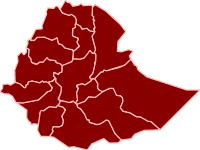- Thumbnail

- Resource ID
- bc91a2e4-ce3e-11e9-87c4-080027c1726a
- Title
- floristic_regions
- Date
- Sept. 3, 2019, 6:34 a.m., Publication
- Abstract
- No abstract provided.
- Edition
- --
- Owner
- tarikugeda
- Point of Contact
- Ayane
- tarikugeda@gmail.com
- Purpose
- As indicated in different reports such as Et_NBSAP 2015-2020 (https://www.cbd.int/nbsap/about/latest/default.shtml), classification of Ethiopian ecosystems into 10 was based on 12 vegetation types of the country produced in 2010. However, there exists no clear explanation to justify classification of 12 vegetation types (which describe dominant plant species composition) into 10 ecosystems, and nor has such classification been satisfactory to the scholars working in the area and conservation pra
- Maintenance Frequency
- None
- Type
- not filled
- Restrictions
- None
- License
- Not Specified
- Language
- eng
- Temporal Extent
- Start
- --
- End
- --
- Supplemental Information
- Ecosystem mapping needs to be based on the best available data from sub-national and national data sources at appropriate scales, to provide coherent information about ecosystems and their characteristics.
During the MBP First Stakeholders Consultative Meeting that was conducted on 8 and 9 September 2018; ecosystem technical working group, guided by discussion points and Potential Natural Vegetation Atlas shapefile and Et_NBSAP 2015-2020 document, the stakeholders of the meeting have classified the country’s ecosystem into seven terrestrial, aquatic and wetland ecosystems. These have further been refined and classified into 78 sub-types at the Second and Third National Stakeholders Consultative meetings that were conducted between 19 and 20 September 2018 and between 30 January and 02 February 2019. The evaluation of the SBA was done at this sub-type level. Summary of the draft classification of ecosystems, namely: five majors terrestrial, one aquatic and one wetland ecosystem as major and respective 78 sub-ecosystems.
Mapping and classifying ecosystems are not simple. Ecosystems can be defined in many ways, at different spatial scales, and their boundaries are often inherently fuzzy rather than exact. In spite of these challenges, Ethiopian scholars have made great strides in developing hierarchical classification systems for ecosystems in terrestrial, aquatic and wetland environments
Biodiversity and ecosystems of Ethiopia are facing multitudes of interlinked pressures such as habitat conversion, unsustainable utilization, invasive alien species, climate change, replacement of farmers’ varieties/breeds and pollution. These are resulting in eventual fragmentation and degradation of natural habitats, disturbance of ecosystem functions and loss of biodiversity and ecosystem services.
- Data Quality
- --
- Extent
-
- long min: 32.999938964843800
- long max: 47.986179351806600
- lat min: 3.402421951293950
- lat max: 14.899958610534700
- Spatial Reference System Identifier
- EPSG:4326
- Keywords
- no keywords
- Category
- Environment
- Regions
-
Global
,
Africa
,
Central Africa
,
East Africa
,
Djibouti
,
Eritrea
,
Ethiopia
,
Documentliist
,
Kenya
,
Somalia
,
Uganda
,
North Africa
,
Sudan
,
South Sudan
,
Asia
,
East Asia
,
South Asia
,
Middle East
,
Yemen
,
Pacific
,
Kiribati
